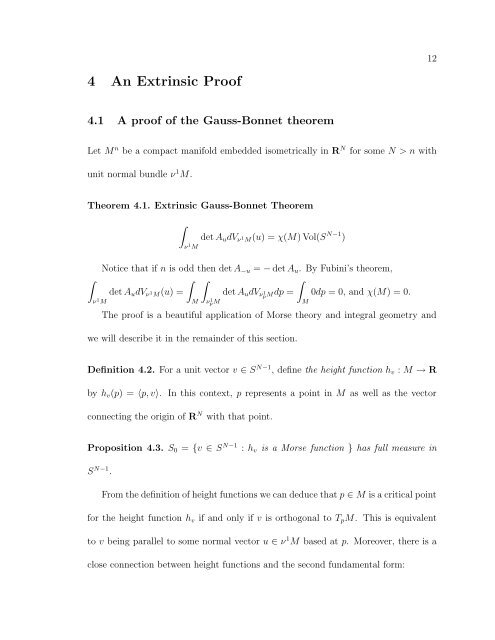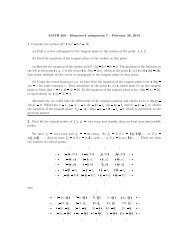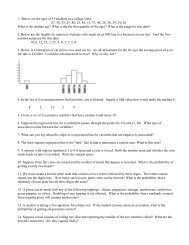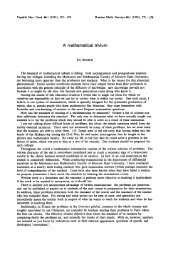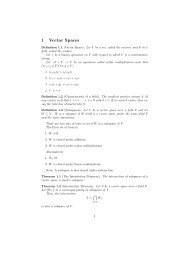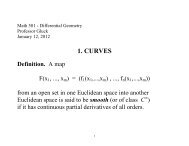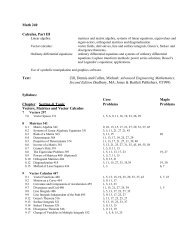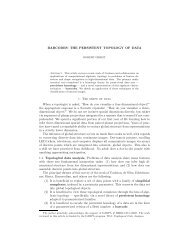MORSE THEORY AND THE GAUSS-BONNET FORMULA Alina ...
MORSE THEORY AND THE GAUSS-BONNET FORMULA Alina ...
MORSE THEORY AND THE GAUSS-BONNET FORMULA Alina ...
You also want an ePaper? Increase the reach of your titles
YUMPU automatically turns print PDFs into web optimized ePapers that Google loves.
4 An Extrinsic Proof<br />
4.1 A proof of the Gauss-Bonnet theorem<br />
Let M n be a compact manifold embedded isometrically in R N for some N > n with<br />
unit normal bundle ν 1 M.<br />
Theorem 4.1. Extrinsic Gauss-Bonnet Theorem<br />
�<br />
ν 1 M<br />
�<br />
ν 1 M<br />
det AudV ν 1 M(u) = χ(M) Vol(S N−1 )<br />
Notice that if n is odd then det A−u = − det Au. By Fubini’s theorem,<br />
� �<br />
�<br />
det AudVν1M(u) = det AudVν1 pMdp = 0dp = 0, and χ(M) = 0.<br />
M<br />
ν 1 pM<br />
The proof is a beautiful application of Morse theory and integral geometry and<br />
we will describe it in the remainder of this section.<br />
Definition 4.2. For a unit vector v ∈ S N−1 , define the height function hv : M → R<br />
by hv(p) = 〈p, v〉. In this context, p represents a point in M as well as the vector<br />
connecting the origin of R N with that point.<br />
Proposition 4.3. S0 = {v ∈ S N−1 : hv is a Morse function } has full measure in<br />
S N−1 .<br />
From the definition of height functions we can deduce that p ∈ M is a critical point<br />
for the height function hv if and only if v is orthogonal to TpM. This is equivalent<br />
to v being parallel to some normal vector u ∈ ν 1 M based at p. Moreover, there is a<br />
close connection between height functions and the second fundamental form:<br />
M<br />
12


